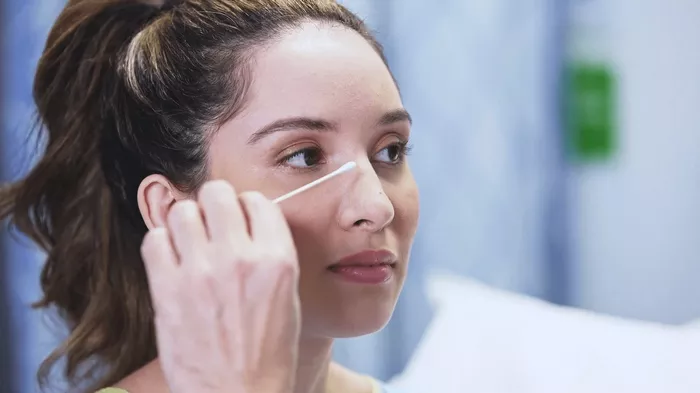Rhinoplasty, commonly referred to as a “nose job,” is a cosmetic surgical procedure that aims to reshape and enhance the appearance of the nose. Over the years, rhinoplasty has gained immense popularity as individuals seek to achieve their desired facial aesthetics. Two primary categories of rhinoplasty exist: primary rhinoplasty and revision rhinoplasty. In this article, we will explore the key differences between these two procedures, helping you understand when each might be appropriate and what to expect.
Primary Rhinoplasty
Primary rhinoplasty, often simply called “rhinoplasty,” is the initial surgical procedure performed on the nose. It is typically chosen by individuals who are dissatisfied with the natural appearance of their nose and wish to make cosmetic changes. The primary goals of primary rhinoplasty are to:
Enhance Appearance: Improve the aesthetics of the nose by addressing concerns such as a hump on the bridge, a wide or asymmetrical tip, a crooked nose, or other cosmetic issues.
Correct Breathing Issues: In some cases, primary rhinoplasty is performed to correct functional issues that impede proper nasal breathing. These issues may include a deviated septum or enlarged turbinates.
Procedure for Primary Rhinoplasty
The primary rhinoplasty procedure typically involves the following steps:
Consultation: The process begins with a consultation with a board-certified plastic surgeon or facial plastic surgeon. During this consultation, the patient discusses their goals and expectations for the surgery.
Anesthesia: The patient is placed under general or local anesthesia to ensure comfort during the procedure.
Incisions: The surgeon makes incisions inside the nose (closed rhinoplasty) or, in some cases, a small external incision on the columella (open rhinoplasty).
Reshaping: The surgeon then reshapes the nasal bones, cartilage, and tissues to achieve the desired results. This may involve removing excess tissue, reducing or augmenting the nasal structure, or adjusting the tip of the nose.
Closing Incisions: If external incisions were made, they are closed with sutures. Internal incisions typically do not require sutures.
Recovery: After surgery, patients undergo a recovery period, which may involve swelling and bruising. Full recovery can take several weeks to months.
Revision Rhinoplasty
Revision rhinoplasty, often referred to as secondary rhinoplasty, is a procedure performed after a primary rhinoplasty to address any remaining aesthetic or functional issues or to correct complications that may have arisen from the initial surgery. The goals of revision rhinoplasty are to:
Correct Unsatisfactory Results: Address cosmetic concerns that were not adequately addressed during the primary rhinoplasty or have developed over time.
Repair Complications: Correct complications that may have arisen from the primary surgery, such as asymmetry, breathing problems, or scarring.
Procedure for Revision Rhinoplasty
Revision rhinoplasty is a more complex procedure compared to primary rhinoplasty due to the alterations made during the initial surgery. The steps involved in revision rhinoplasty include:
Consultation: A thorough consultation with an experienced revision rhinoplasty specialist is crucial. The surgeon will assess the patient’s specific concerns, review their medical history, and create a tailored surgical plan.
Anesthesia: Similar to primary rhinoplasty, the patient is placed under general or local anesthesia.
Incisions: The surgeon may need to work with existing scar tissue from the primary surgery. Depending on the complexity of the revision, internal or external incisions may be necessary.
Reshaping: The surgeon addresses the remaining cosmetic or functional issues by modifying the nasal structure as needed.
Closing Incisions: Any incisions made during the procedure are closed with sutures.
Recovery: Recovery from revision rhinoplasty can also take several weeks to months, with potential swelling and bruising.
Key Differences
Purpose: Primary rhinoplasty is the initial surgery performed to enhance the nose’s appearance or correct functional issues, while revision rhinoplasty is a follow-up procedure aimed at refining or repairing the results of the primary surgery.
Complexity: Revision rhinoplasty is typically more complex due to the presence of scar tissue and alterations made during the primary surgery.
Expectations: Patients undergoing primary rhinoplasty have the expectation of improving their nose’s appearance, while revision rhinoplasty patients may have the additional goal of correcting prior surgical complications or unsatisfactory results.
Conclusion
Both primary and revision rhinoplasty procedures can have a significant impact on a person’s self-confidence and overall facial aesthetics. The choice between the two depends on individual goals, the need for correction or enhancement, and the assessment of an experienced surgeon.
It’s essential to choose a board-certified surgeon with expertise in rhinoplasty procedures for the best results. Regardless of whether you opt for primary or revision rhinoplasty, thorough consultation and realistic expectations are essential to achieve the desired outcome and ensure a safe and successful procedure.


